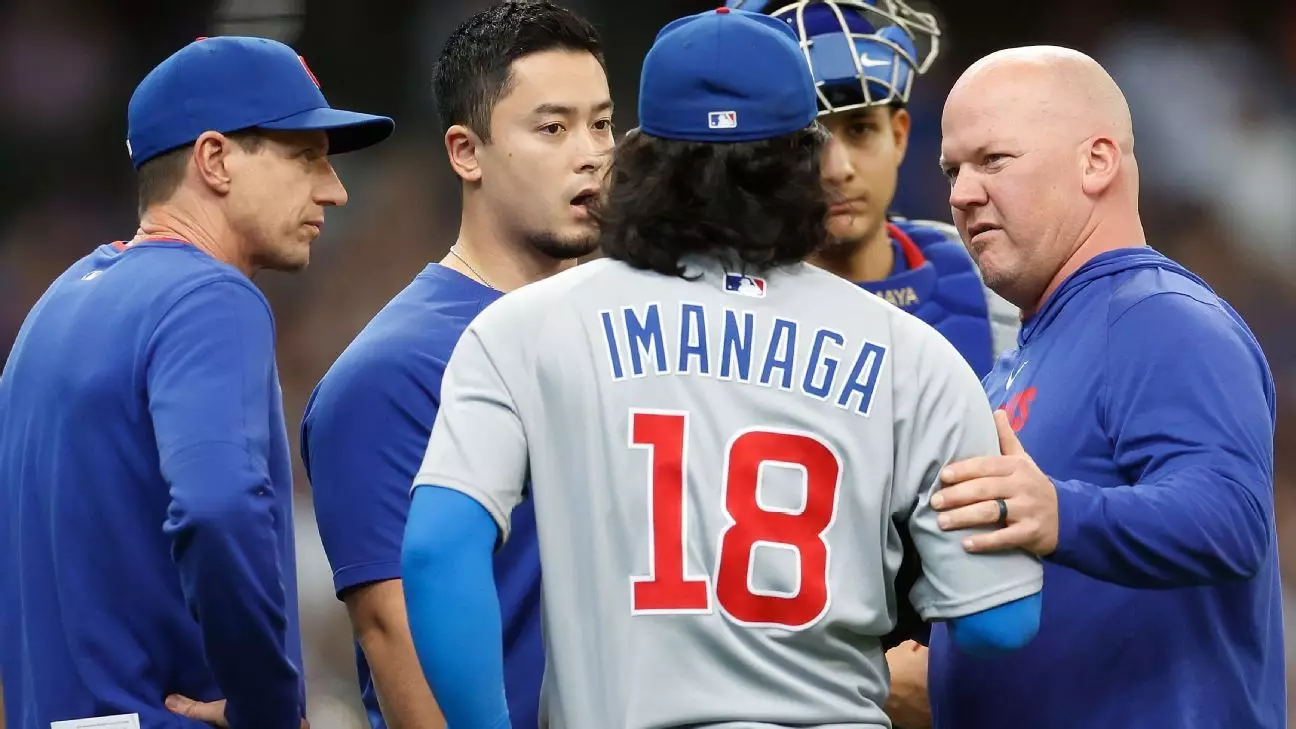In the world of professional sports, injuries can turn a season upside down in the blink of an eye. The Chicago Cubs are now faced with the challenge of supporting left-hander Shota Imanaga, who has recently been sidelined due to a mild strain of his left hamstring. As the Cubs embrace the uncertainty that comes with this setback, they must tread carefully as they determine the best path for Imanaga’s recovery. This situation has sparked conversations about resilience, not just in terms of physical healing but also mental fortitude as athletes confront the realities of being out of play.
Imanaga, having experienced his first hamstring injury at 31, appears to be approaching his situation with a sense of optimism. He noted that a doctor reassured him about the injury’s nature, emphasizing that it was preferable to a shoulder or elbow ailment. This perspective reflects a level of maturity that many sports enthusiasts can admire. As Imanaga stated, “Talking to the doctor, he even mentioned that it was good that it wasn’t like a shoulder or an elbow injury.” Such sentiments highlight a positive mindset that is crucial for athletes navigating the tumultuous landscape of injuries.
The Lessons from Peers
Support from teammates can significantly influence an athlete’s recovery process. As Imanaga seeks to maintain his rhythm by throwing while his leg heals, he also reaches out for wisdom from fellow players. His communication with Justin Steele, another Cubs pitcher who faced a hamstring injury last year, illustrates the importance of camaraderie in professional sports. Steele’s experience in managing his injury is invaluable, and Imanaga’s proactive approach to learn from others is commendable.
Steele’s own struggles with injuries establish a compelling narrative about the unpredictability of an athlete’s journey. Steele, who will miss the remainder of the season due to an elbow problem, can offer insights into resilience in the face of crushing setbacks. Imanaga’s connection with Steele not only shows his desire to learn but also fosters a sense of unity within the team, proving that collective struggles can lead to shared strength.
Individual Focus Amidst Team Dynamics
Although hamstring injuries can often limit an athlete’s capabilities temporarily, they also provide a moment for reflection. Imanaga’s understanding of the extensive range of factors that can lead to injuries demonstrates a mature grasp of sports science. He remarked, “If you think about why the reason the injury was caused, there’s probably so many different factors going on.” This level of self-awareness showcases an essential aspect of an athlete’s journey—transforming setbacks into opportunities for growth.
In modern baseball, where data analytics and sport-specific science are more prevalent than ever, such insights are not merely anecdotal; they’re backed by research that advocates for player health and performance enhancement. Imanaga is committed to utilizing this period as a time for reevaluation, focusing on pre-game preparation and learning how to adjust his practice habits. This proactive stance could lead him to enhance his career longevity and effectiveness as a player—a win-win situation.
Future Implications for the Cubs
Inevitably, Imanaga’s absence opens a void in the Cubs’ pitching rotation. Not only does he sit with a respectable 2.82 ERA, but he also embodies hope after initially securing a lucrative contract of $53 million over four years following a commendable performance the previous season. The Cubs now need to strategize and make crucial decisions regarding who will fill the gap in their lineup.
As the team eyes potential replacements like Cade Horton and Chris Flexen, the broader implications of Imanaga’s injury reflect the dynamic nature of baseball careers. The Cubs find themselves at a critical junction in the season, navigating not just physical injuries but the broader landscape of team dynamics amidst the pressures of competition. Imanaga’s recovery is a priority, but how the team responds to his absence will directly shape their trajectory as they strive for success in an unforgiving league.
As we observe Imanaga’s journey through this challenging time, we’re reminded that resilience in professional sports often transcends physical healing. It involves nurturing a mindset that seeks growth, learning from others, and embracing the unpredictability of an athlete’s path.


Leave a Reply